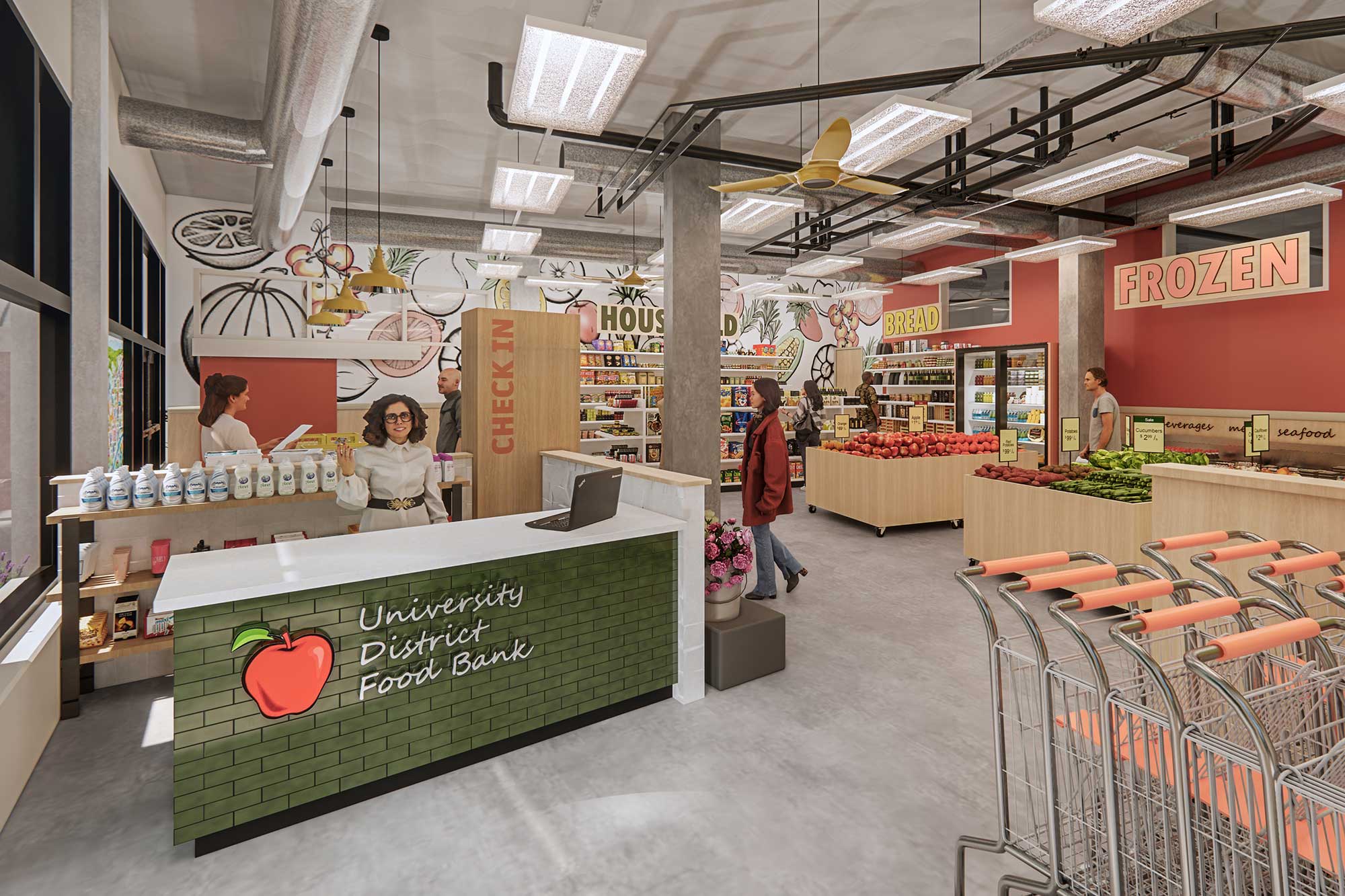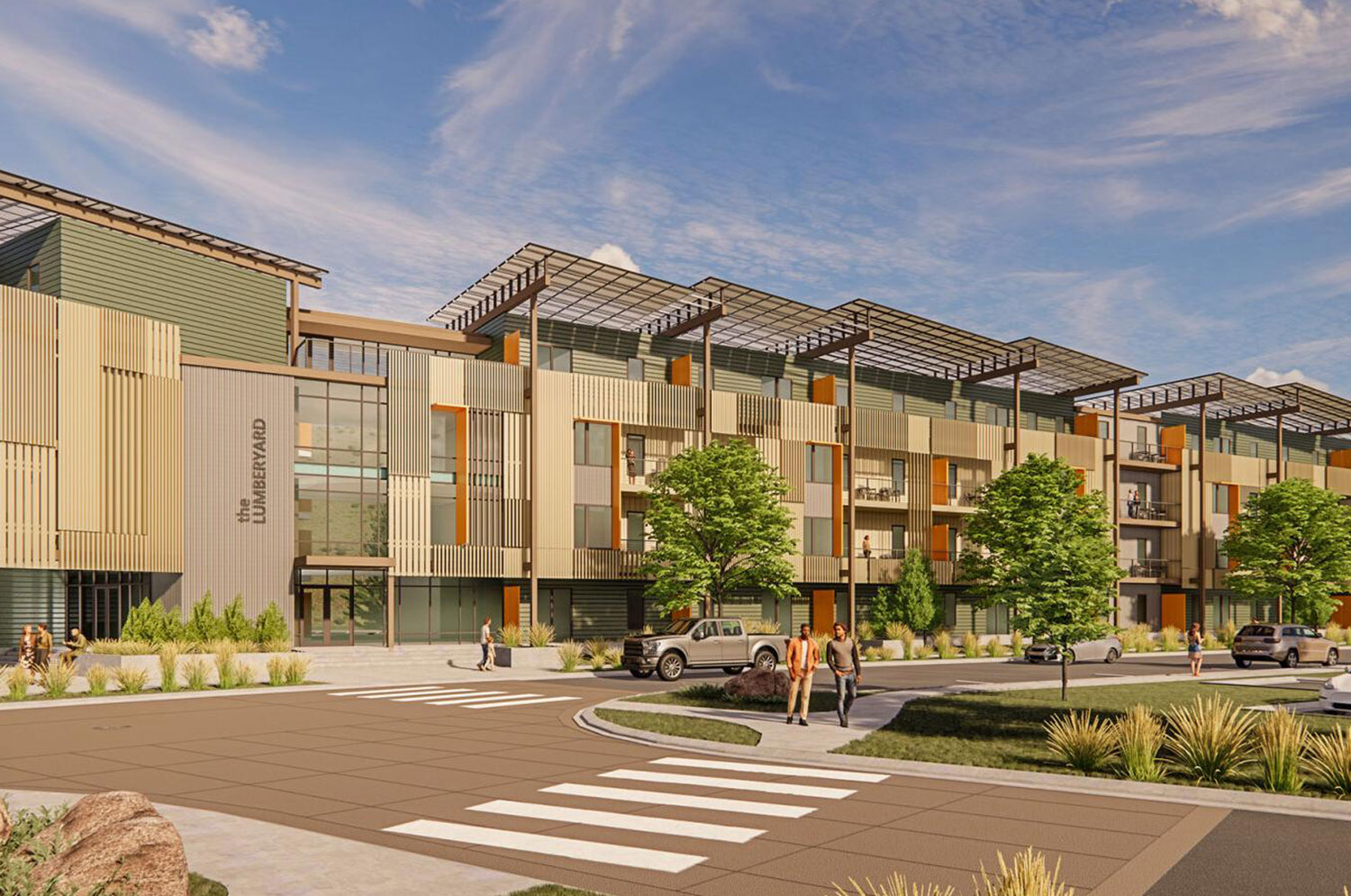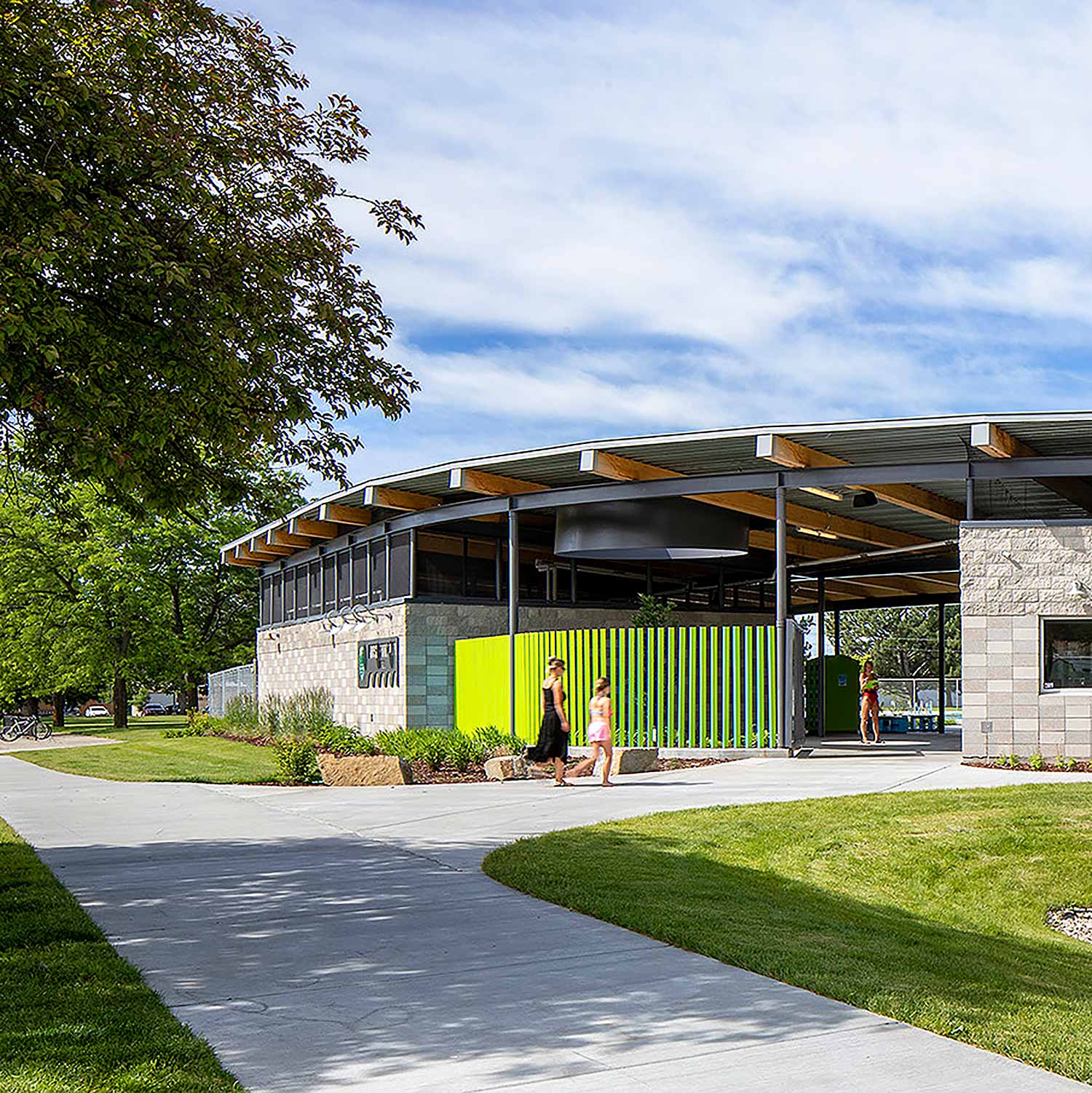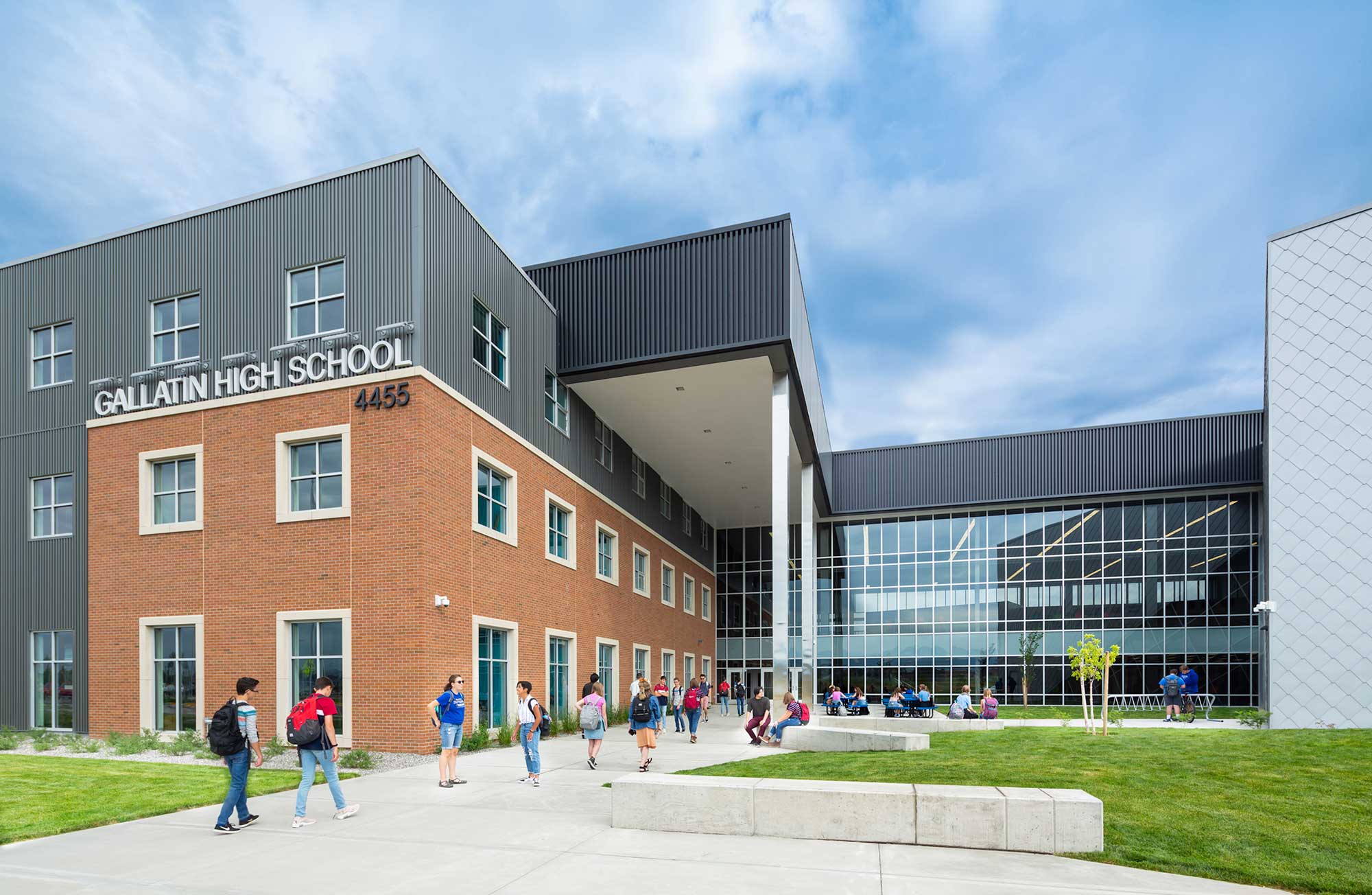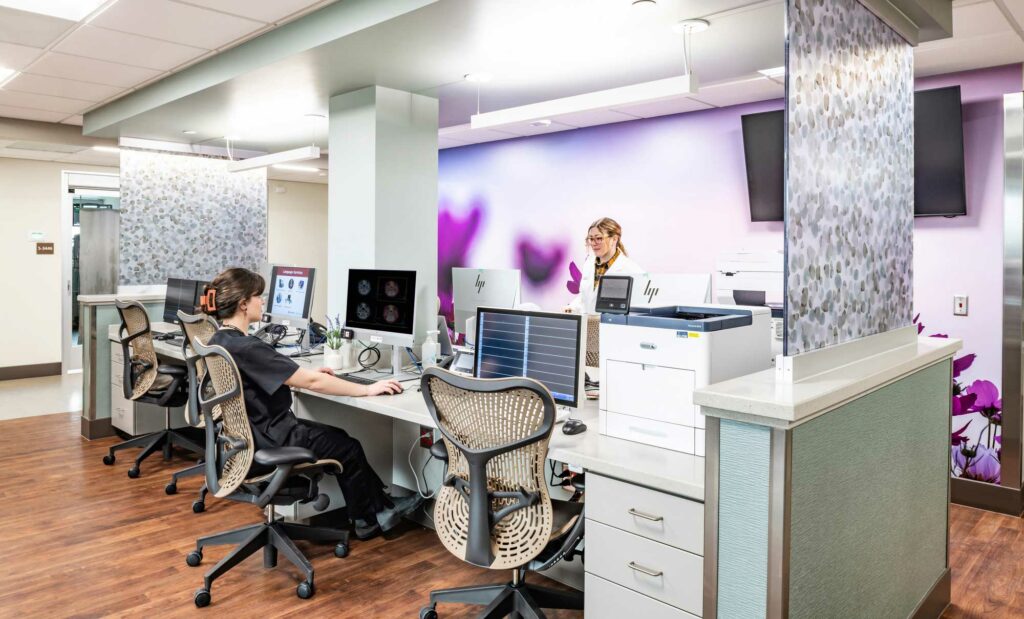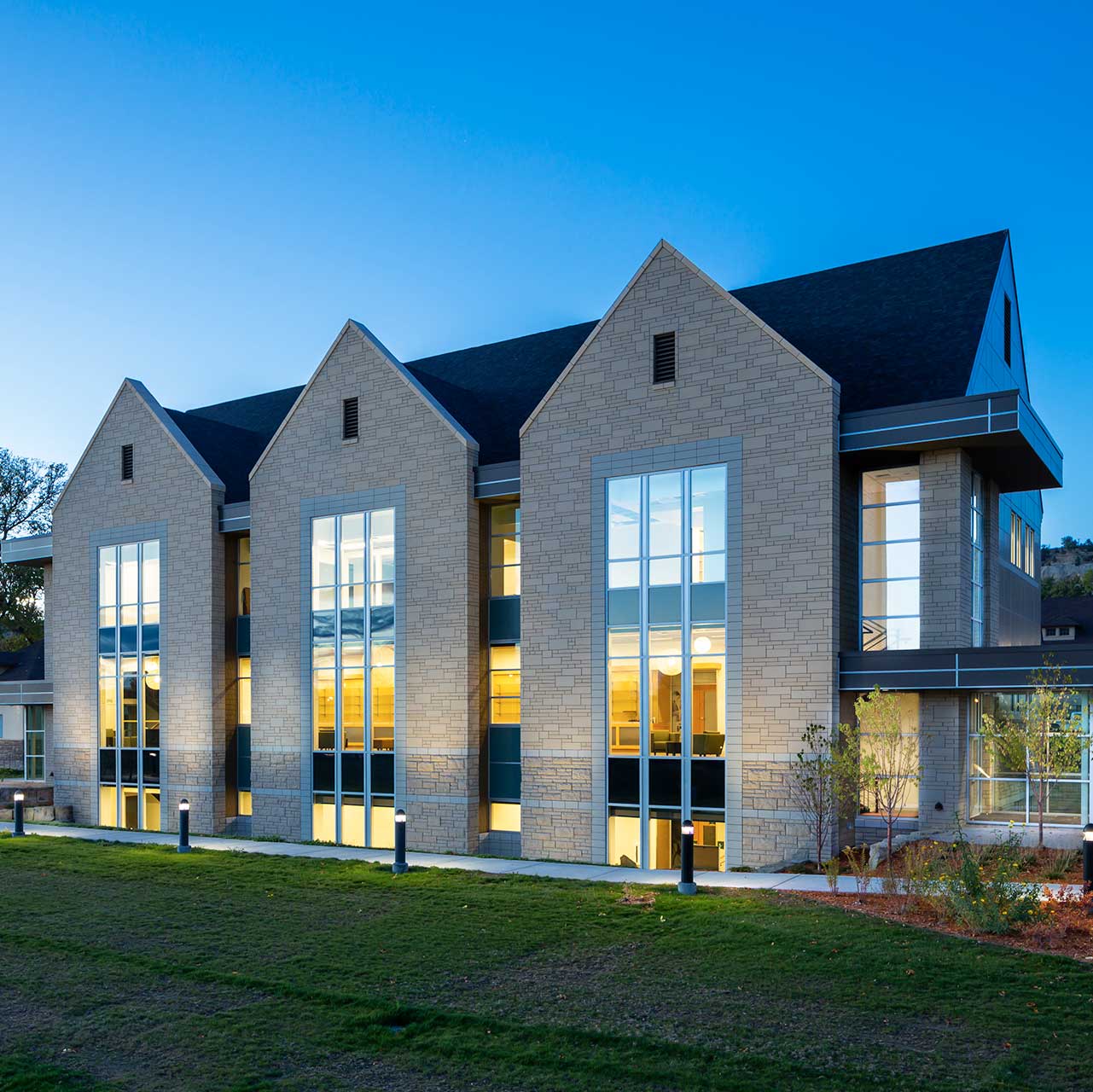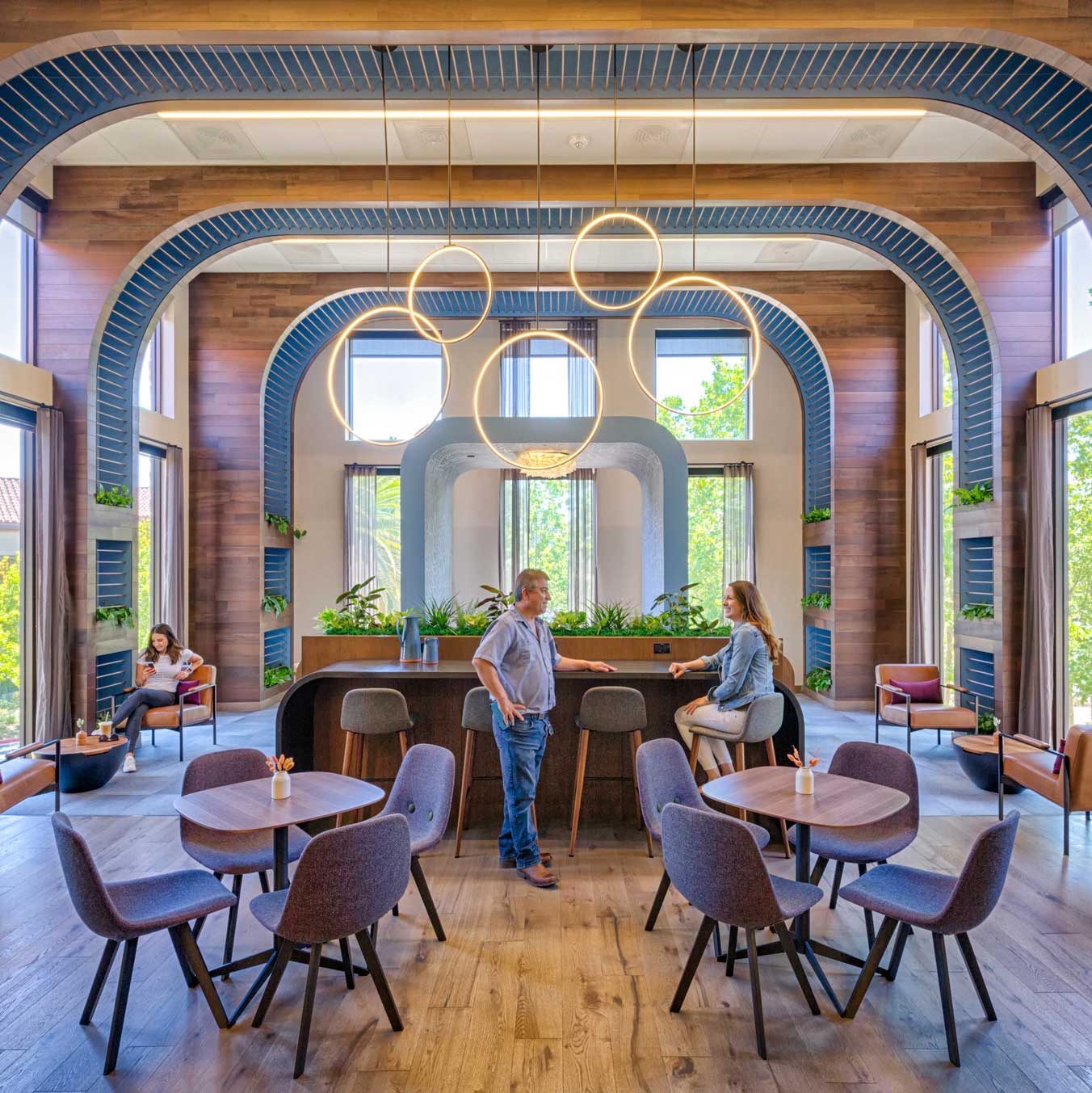Design to Positively Impact People
Beyond environmental impacts, designers have a responsibility to account for the human experience within the built environment as well as the social impacts of the projects we help our clients realize. We do this through a variety of considerations such as accessibility, indoor air quality, biophilic design, material selections, and the building materials supply chain.
Enhanced Health and Wellness
People spend roughly 1/3 of their lives at work, and healthy, well-designed workspaces ensure high performance, strong retention, and less sick time. Cushing Terrell’s design teams have a knack for enhancing the ecosystem of a workplace to create spaces where teams with diverse skillsets and needs come together to support one another.
By designing for the user experience, your workplace ecosystem will thrive. Through thoughtful interior design, careful materials selections, health-promoting systems, and the integration of biophilic elements, we can design for health and wellness with targeted services that address: acoustics, comfort, daylighting, inclusion and cohesion, indoor air quality, safety, and water quality.


Responsible Material Analysis, Sourcing, and Specification
At Cushing Terrell, we’re committed to healthy, sustainable environments. This means sourcing and utilizing materials that support healthy indoor air quality, address social equity, and have a reduced impact on our environment through the raw ingredients used and the manufacturing and production processes.
Our team takes special care, conducting in-depth research, and utilizing tools and resources to ensure projects are both environmentally and socially responsible. From greening our materials library and partnering with mindful MATERIALS, to joining Material Bank’s program for net-zero sampling and championing the elimination of slave labor in the building materials supply chain through Design for Freedom, we’re continually advancing transparency, knowledge, and action when it comes to delivering projects for which our clients (and our communities) can be proud.
Certification Management, Implementation, and Documentation
While you’re putting in the effort to realize a project that is responsible and sustainable, third-party certifications not only help drive the process, but also help you provide documentation to support ESG goals, company values, and a positive brand reputation.
We have the expertise to support the certification process, from initial design decisions through commissioning and post occupancy. Some of the programs we utilize to ensure health, wellness, and social equity include: Collaborative for High Performance Schools, Fitwel, Living Building Challenge, and WELL.

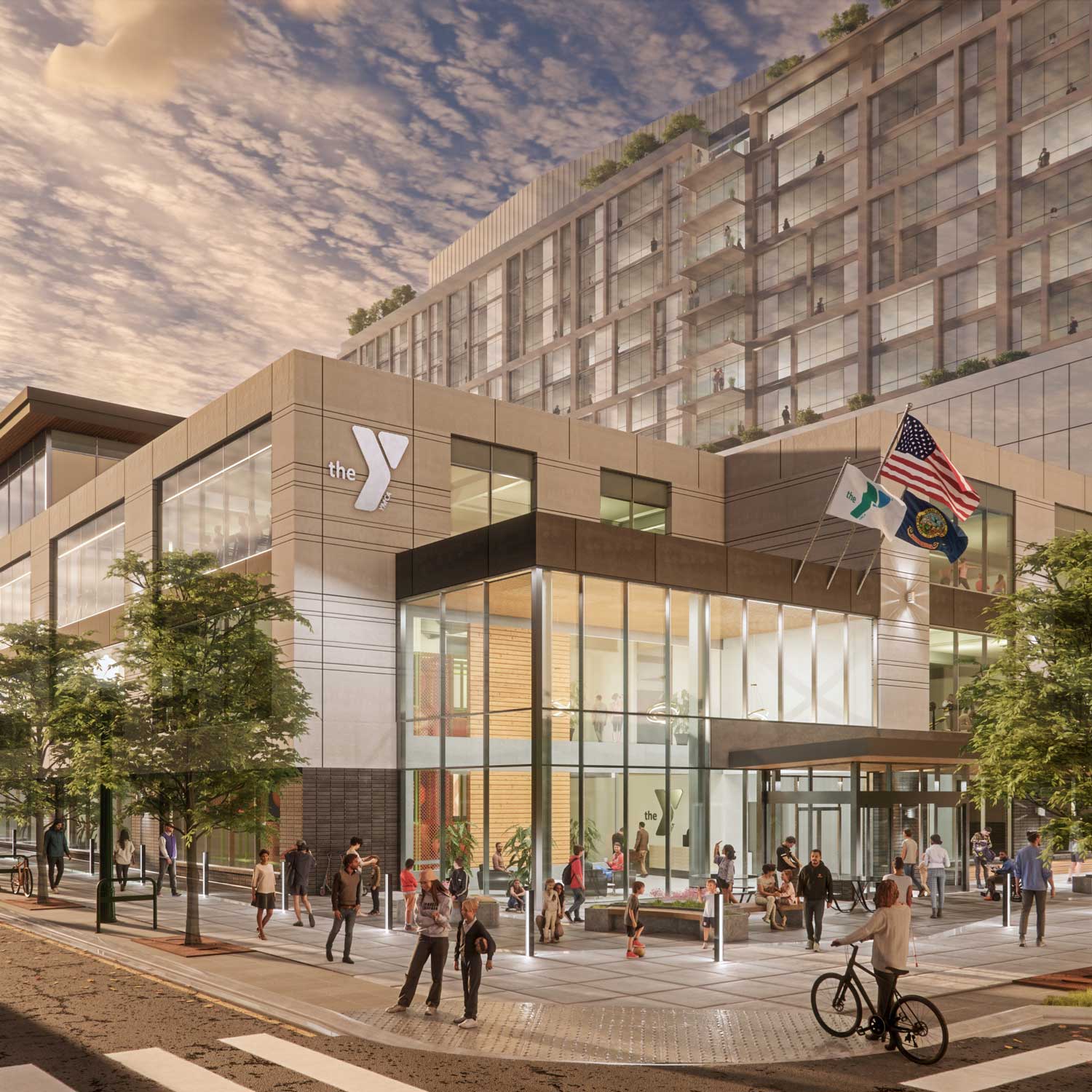
Supporting Accessibility, Community, and Culture
Projects that fit within the cultural context of the surrounding businesses and neighborhoods and that are conceived to welcome and enrich communities are those that see long-term viability. Through robust stakeholder, community, and user-group engagement efforts, combined with knowledge from our local teams, we not only help our clients understand the needs of building/facility occupants, but also how their project can positively impact the overall economy and strengthen the societal connections of an area.
Beyond meeting ADA Accessibility Standards, our teams help clients go above and beyond through design considerations that enhance accessibility, respond to the needs of a neuro-diverse population, and overall support diversity, equity, and inclusion.
Biophilic Design
Along with striving to reduce negative impacts on the environment by minimizing the consumption of non-renewable resources and waste, sustainable design is also the pursuit of creating healthy, productive environments. Biophilic design is an experience-based method that strives to maintain a human connection with nature to promote occupant health, happiness, and productivity.
Biophilic design elements can be anything that help create that connection to nature — sensorial, psychological, or emotional. For example, finishes that are composed of natural materials or which reference nature in their patterns or textures.
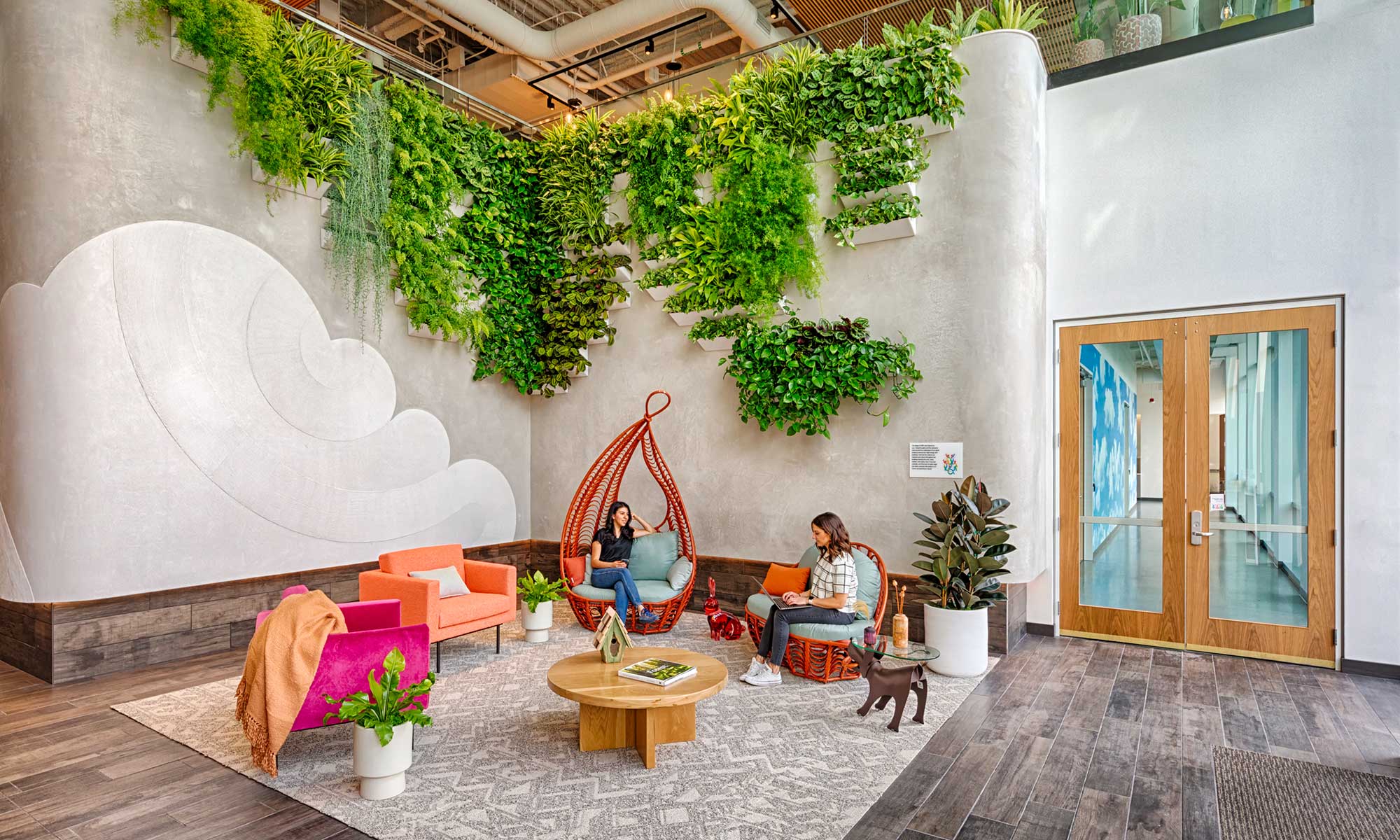
Project Examples
We’ve made the Living Product 50 Pledge committing to products that support human, climate, ecosystem, and social health.
With our multidisciplinary expertise, we bring together architects, engineers, interior designers, and landscape architects to design comprehensive, holistic solutions that result in projects that account for the human experience within the built environment as well as the social impacts of the projects we help our clients realize. Click below to explore some of these projects.
Behind the Design
Read some of the stories about the people and projects that are helping to elevate health, wellness, and social impact to benefit culture and community.


